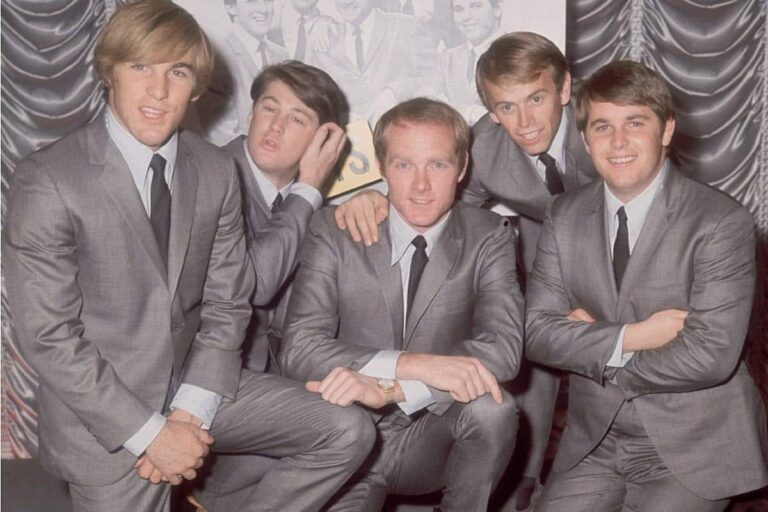Discover the Top 15 Greatest Folk Music Anthems in History!
Folk music, with its timeless melodies and heartfelt lyrics, has an indelible place in the tapestry of human culture. Its roots run deep, drawing from traditions passed down through generations, capturing the essence of different cultures and eras. In this article, we embark on a journey through the annals of musical history to explore the top 15 most famous and beloved folk songs of all time. These songs resonate not only for their musical prowess but also for their ability to evoke emotions, tell stories, and connect people across borders and time. From haunting ballads that echo through misty valleys to spirited anthems that rally communities, each song holds a unique place in the hearts of listeners worldwide. Through our exploration, we’ll delve into the origins of these timeless tunes, uncovering the stories behind the music and the cultural significance they carry. Whether you’re a seasoned folk aficionado or a newcomer to the genre, join us as we celebrate the rich tapestry of human experience woven through these 15 best folk music songs, each a testament to the enduring power of music to transcend time and unite us all.
1. Both Sides Now by Joni Mitchell
“Both Sides Now” by Joni Mitchell stands as an enduring masterpiece in the realm of folk music, captivating audiences with its poignant lyricism and timeless melody. Released in 1969 as part of Mitchell’s iconic album “Clouds,” the song transcends generations with its introspective exploration of life’s complexities. Mitchell’s ethereal vocals, accompanied by her skilled guitar work, weave a tapestry of emotions, inviting listeners on a journey through the highs and lows of human experience. The song’s evocative imagery and introspective lyrics, which muse on love, loss, and the passage of time, resonate deeply with audiences, earning it a place among the most beloved folk songs of all time. “Both Sides Now” has endured as a cultural touchstone, covered by numerous artists across genres and featured in films, television shows, and commercials. Its enduring popularity speaks to its universal themes and Mitchell’s ability to distill profound truths into simple, yet profoundly affecting, melodies. With its haunting beauty and universal resonance, “Both Sides Now” continues to captivate audiences and solidify its place as one of the greatest folk songs ever written.
2. The Sound of Silence by Simon & Garfunkel
“The Sound of Silence” by Simon & Garfunkel is an iconic folk ballad that transcends time, capturing the essence of existential reflection and societal disconnection. Originally released in 1964, the song emerged as a poignant commentary on the tumultuous social and political landscape of the era, resonating deeply with a generation grappling with cultural shifts and identity crises. Paul Simon’s haunting lyrics, paired with Art Garfunkel’s crystalline vocals, create an atmosphere of haunting melancholy, evoking a sense of alienation and introspection. The song’s sparse instrumentation, characterized by acoustic guitar and subtle harmonies, further accentuates its atmospheric power, drawing listeners into its introspective world. “The Sound of Silence” has endured as a cultural touchstone, finding renewed relevance with each passing generation. Its themes of isolation, communication breakdown, and the search for meaning continue to strike a chord with audiences worldwide, solidifying its status as one of the most beloved and influential folk songs of all time. As a testament to its enduring popularity, “The Sound of Silence” has been covered by countless artists and featured in films, television shows, and advertisements, cementing its place in the pantheon of musical classics. With its timeless resonance and evocative storytelling, the song continues to captivate listeners and inspire contemplation of the human condition.
3. Blowin’ in the Wind by Bob Dylan
“Blowin’ in the Wind” by Bob Dylan stands as a timeless anthem of social justice and existential questioning, hailed as one of the most influential folk songs ever written. Released in 1963, amidst the fervor of the civil rights movement and escalating tensions surrounding the Vietnam War, Dylan’s powerful lyrics resonated deeply with a generation seeking answers to profound societal issues. The song’s simple yet profound questions about war, freedom, and equality reverberate with a raw honesty that transcends time and place. Dylan’s gravelly voice, accompanied by his acoustic guitar, carries the weight of these questions, inviting listeners to ponder the complexities of the human experience. “Blowin’ in the Wind” quickly became an anthem for social change, adopted by activists and protesters around the world. Its universal appeal lies in its ability to articulate the frustrations and aspirations of an entire generation, offering a voice to the marginalized and disenfranchised. Decades later, “Blowin’ in the Wind” remains as relevant as ever, its message of hope and perseverance continuing to inspire new generations of activists and artists. With its timeless resonance and enduring relevance, the song stands as a testament to Dylan’s unparalleled ability to capture the spirit of a tumultuous era and distill it into a transcendent musical masterpiece.
4. This Land is Your Land by Woody Guthrie
“This Land is Your Land” by Woody Guthrie is more than a folk song; it’s an enduring anthem of unity, equality, and the American spirit. Penned in 1940 as a response to Irving Berlin’s “God Bless America,” Guthrie’s composition emerged as a rallying cry for social justice and inclusivity, celebrating the vast and varied landscapes of the United States. With its simple, yet evocative lyrics, Guthrie paints a vivid portrait of America’s natural beauty and cultural diversity. From the redwood forests to the Gulf Stream waters, the song traverses the breadth of the nation, proclaiming that this land belongs to all its inhabitants, regardless of race, creed, or background. “This Land is Your Land” quickly became a staple of the American folk tradition, embraced by generations of musicians and activists as an emblem of solidarity and resilience. Its message of inclusivity and shared ownership resonates as strongly today as it did over half a century ago, reminding us of the ideals upon which the nation was founded. As a testament to its enduring appeal, “This Land is Your Land” has been covered by countless artists and incorporated into school curricula across the country, ensuring its legacy for future generations. With its timeless message of unity and belonging, Guthrie’s masterpiece continues to inspire hope and optimism in the hearts of all who hear it.
5. Mr. Tambourine Man by Bob Dylan
“Mr. Tambourine Man” by Bob Dylan is a mesmerizing journey through the landscapes of imagination and introspection, hailed as one of the most enigmatic and influential folk songs of all time. Released in 1965 as the opening track of Dylan’s album “Bringing It All Back Home,” the song captivated audiences with its surreal lyricism and haunting melody. Dylan’s lyrical prowess shines in “Mr. Tambourine Man,” as he weaves a dreamscape of vivid imagery and poetic symbolism. The titular character, the tambourine man, serves as a mystical guide, leading the listener on a voyage through realms of possibility and wonder. The song’s ethereal quality is heightened by Dylan’s distinctive voice and hypnotic guitar accompaniment, creating an atmosphere of otherworldly beauty and transcendence. As the tambourine man beckons with his magical instrument, Dylan invites us to shed the constraints of reality and embrace the boundless possibilities of the human imagination. “Mr. Tambourine Man” quickly became an anthem for the countercultural movement of the 1960s, embraced by a generation seeking liberation from the confines of mainstream society. Its timeless appeal lies in its ability to evoke a sense of yearning for something beyond the mundane, inspiring listeners to embark on their own quests for meaning and enlightenment. Decades after its release, “Mr. Tambourine Man” remains a cornerstone of Dylan’s vast musical legacy, celebrated for its enigmatic charm and enduring influence. With its mesmerizing melody and evocative imagery, the song continues to enchant and captivate audiences, inviting them to join in its timeless journey of exploration and discovery.
6. Turn! Turn! Turn! by Pete Seeger
“Turn! Turn! Turn!” by Pete Seeger is a timeless folk anthem that encapsulates the essence of change and the cyclical nature of life itself. Adapted from the Book of Ecclesiastes in the Bible, Seeger’s rendition of the song, released in 1962, resonated deeply with audiences seeking solace and meaning in the midst of social and political upheaval. Seeger’s earnest vocals, accompanied by his signature banjo, imbue the song with a sense of timeless wisdom and profound reflection. The lyrics, which speak of the inevitability of change and the interconnectedness of all things, strike a universal chord, offering reassurance in times of uncertainty. “Turn! Turn! Turn!” became an anthem for the peace and civil rights movements of the 1960s, embraced by activists and protesters as a call for justice and harmony. Its message of hope and resilience continues to resonate today, serving as a reminder that, no matter how dark the present may seem, there is always the promise of renewal on the horizon. As a testament to its enduring relevance, “Turn! Turn! Turn!” has been covered by countless artists across genres, cementing its status as a folk classic. Its timeless message of unity and acceptance serves as a beacon of light in an ever-changing world, inspiring generations to embrace the beauty of transformation and the power of collective action.
7. Where Have All the Flowers Gone? by Pete Seeger
“Where Have All the Flowers Gone?” by Pete Seeger is a haunting and poignant folk ballad that captures the essence of the human toll of war. Released in 1955, during the height of the Cold War and amidst growing anti-war sentiment, Seeger’s powerful lyrics resonated deeply with audiences worldwide. The song’s simple yet profound structure, with its repeating verses and melancholic melody, creates a sense of solemn reflection and introspection. Through each repetition of the question “Where have all the flowers gone?” followed by the stark response, “Long time passing,” Seeger masterfully conveys the cyclical nature of conflict and its devastating impact on generations of lives. “Where Have All the Flowers Gone?” quickly became an anthem for the peace movement, embraced by activists and protesters as a poignant reminder of the human cost of war. Its universal message of loss and longing transcends time and place, resonating with audiences of all backgrounds and generations. Decades after its release, “Where Have All the Flowers Gone?” remains a powerful testament to Seeger’s ability to capture the collective conscience of a generation. Its enduring relevance serves as a stark reminder of the need for peace and understanding in an often tumultuous world, ensuring its legacy as one of the most iconic folk songs of all time.
8. If I Had a Hammer by Pete Seeger and Lee Hays
“If I Had a Hammer” by Pete Seeger and Lee Hays is a rousing folk anthem that embodies the spirit of social justice and collective action. Co-written by Seeger and Hays in 1949, the song became synonymous with the labor and civil rights movements of the 20th century, inspiring countless individuals to advocate for equality and change. With its simple yet powerful lyrics and infectious melody, “If I Had a Hammer” galvanized audiences with its call for unity and empowerment. The refrain, “If I had a hammer, I’d hammer in the morning, I’d hammer in the evening, all over this land,” served as a rallying cry for workers and activists alike, symbolizing the transformative power of solidarity and perseverance. Seeger and Hays’ earnest vocals, accompanied by Seeger’s signature banjo, infused the song with a sense of urgency and determination, inspiring generations to stand up against injustice and inequality. As the song spread across the country, it became an anthem for the civil rights movement, embraced by activists like Martin Luther King Jr. and Joan Baez as a symbol of hope and resilience. “If I Had a Hammer” continues to resonate today as a timeless reminder of the importance of speaking out against oppression and working together to create a more just and equitable world. Its enduring legacy serves as a testament to the enduring power of music to inspire change and unite people in the pursuit of a better tomorrow.
9. Big Yellow Taxi by Joni Mitchell
“Big Yellow Taxi” by Joni Mitchell is a vibrant and thought-provoking folk-rock anthem that resonates with audiences through its catchy melody and poignant lyrics. Released in 1970 as part of Mitchell’s iconic album “Ladies of the Canyon,” the song became an instant classic, capturing the zeitgeist of the environmental movement and the countercultural ethos of the era. Mitchell’s distinctive vocals, accompanied by her acoustic guitar and buoyant rhythm, infuse the song with a sense of playful urgency. The memorable chorus, with its refrain “They paved paradise and put up a parking lot,” serves as a powerful metaphor for the unchecked urban development and environmental degradation of the time. “Big Yellow Taxi” is not only a critique of environmental destruction but also a call to action, urging listeners to recognize the value of nature and the importance of conservation. Mitchell’s keen observational skills and sharp wit shine through in the song’s clever wordplay and vivid imagery, making it a timeless anthem for anyone concerned about the state of the planet. Decades after its release, “Big Yellow Taxi” remains as relevant as ever, its message of environmental stewardship resonating with a new generation of activists and conservationists. With its infectious melody and thought-provoking lyrics, the song continues to inspire listeners to reflect on the impact of human activity on the natural world and to advocate for positive change.
10. The Times They Are a-Changin’ by Bob Dylan
“The Times They Are a-Changin’” by Bob Dylan is an iconic folk anthem that crystallizes the spirit of social upheaval and transformation. Released in 1964 during a period of profound cultural and political change, the song served as a rallying cry for a generation challenging the status quo and advocating for civil rights, peace, and justice. Dylan’s raw, impassioned vocals, coupled with his poetic lyrics and simple acoustic guitar accompaniment, convey a sense of urgency and defiance. The song’s opening lines, “Come gather ’round people wherever you roam, and admit that the waters around you have grown,” set the tone for a call to action, urging listeners to confront the challenges of the time head-on. “The Times They Are a-Changin’” quickly became an anthem for the civil rights and anti-war movements, embraced by activists and protesters as a declaration of solidarity and resilience. Its timeless message of hope and resilience continues to resonate today, serving as a reminder that change is inevitable and that it is up to each generation to shape the future. Decades after its release, “The Times They Are a-Changin’” remains a potent symbol of the power of music to inspire social change. Its message of unity and empowerment transcends generations, inspiring new waves of activists and artists to speak out against injustice and strive for a better world.
11. Puff The Magic Dragon by Peter, Paul and Mary
“Puff, the Magic Dragon” by Peter, Paul and Mary is a whimsical and bittersweet folk classic that has enchanted audiences of all ages since its release in 1963. Written by Leonard Lipton and Peter Yarrow, the song tells the story of a fantastical dragon named Puff and his young friend, Jackie Paper, as they embark on imaginative adventures in the land of Honalee. The gentle melody and soothing harmonies of Peter, Paul and Mary lend a nostalgic charm to the song, evoking a sense of innocence and wonder. The lyrics paint a vivid picture of Puff and Jackie’s adventures, from frolicking in the autumn mist to sailing off in a boat with billowed sail. “Puff, the Magic Dragon” is more than just a children’s song; it’s a poignant tale of friendship, imagination, and the passage of time. The melancholic undertones of the song’s final verses, which describe Jackie Paper’s departure and Puff’s loneliness, imbue the song with a sense of wistful nostalgia that resonates with listeners of all ages. Despite its origins as a children’s song, “Puff, the Magic Dragon” has endured as a beloved classic, cherished by generations for its timeless appeal and universal themes. Its enduring popularity is a testament to the enduring power of storytelling and the enduring magic of childhood imagination.
12. Leaving on a Jet Plane by John Denver
“Leaving on a Jet Plane” by John Denver is a poignant folk ballad that captures the bittersweet emotions of departure and longing. Released in 1969 as part of Denver’s debut solo album, the song quickly became a chart-topping hit, resonating with audiences around the world. Denver’s gentle, earnest vocals, accompanied by acoustic guitar, convey a sense of vulnerability and raw emotion as he sings about the pain of leaving a loved one behind. The simple yet evocative lyrics speak to the universal experience of saying goodbye, whether it’s for a short trip or a longer journey. “Leaving on a Jet Plane” is characterized by its heartfelt chorus, where Denver repeatedly sings, “So kiss me and smile for me, tell me that you’ll wait for me, hold me like you’ll never let me go.” These lines encapsulate the tender farewell between two people who are reluctant to part but hopeful for the future. The song’s timeless appeal lies in its relatable themes and Denver’s sincere delivery, which resonate with listeners of all ages and backgrounds. Whether it’s the anticipation of a new adventure or the sadness of leaving loved ones behind, “Leaving on a Jet Plane” captures the complex emotions associated with transitions and goodbyes. Decades after its release, “Leaving on a Jet Plane” remains a beloved classic, cherished for its heartfelt lyrics and melodic beauty. Its enduring popularity is a testament to Denver’s ability to tap into the universal human experience and distill it into a timeless musical masterpiece.
13. I Am a Man of Constant Sorrow traditional
“I Am a Man of Constant Sorrow” is a traditional folk song that has roots in the American Appalachian region. While its exact origins are unclear, the song gained widespread popularity in the early 20th century and has since been covered by numerous artists across various genres. The song’s haunting melody and melancholic lyrics tell the tale of a man who has experienced great hardship and sorrow throughout his life. He laments his troubled existence, expressing a sense of resignation to his fate and the challenges he faces. “I Am a Man of Constant Sorrow” speaks to themes of loss, longing, and perseverance in the face of adversity. Its enduring popularity lies in its raw emotion and relatable storytelling, which resonate with listeners who have experienced their own trials and tribulations. Over the years, “I Am a Man of Constant Sorrow” has become a staple







